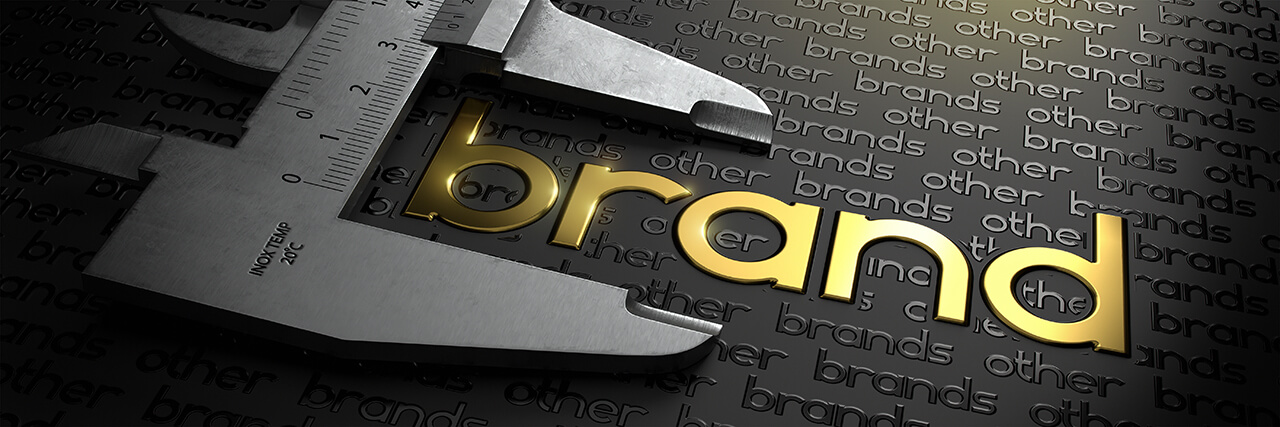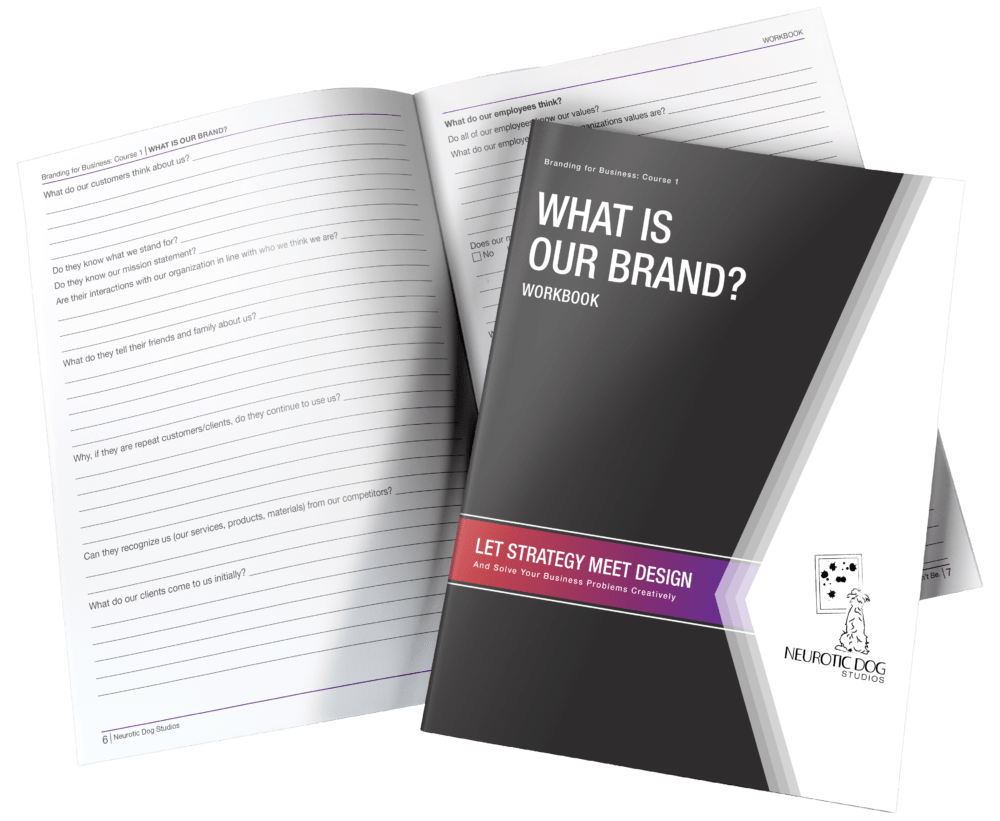Branding & Identity System
Your Logo, Colors, Tagline, Standard Guidelines and a Little Something ElseBranding, Identity, Logos, & Standards Demystified
Many people do not understand the relationships and differences between a brand, identity, and logo. It is a common issue. Some of these terms, and their meaning, are in states of constant evolution. Additionally, these elements are so interconnected that they cannot exist without each other.

It started with the logo
A logo is a mark (text, symbol, or a combination of the two) representing an organization, product, or service offering. Consequently, many people mistakenly think that the logo is the “brand.” This misconception stems from the logo marks origin as a physical brand that livestock owners burned into their chattel.
With multiple companies producing similar offerings, customers needed a way of identifying the product they wanted. For this reason, companies took a lesson from ranchers and started placing a mark on their merchandise to differentiate it from similar products.
In our modern business world, the logo has become the ownership, or production, mark that allows customers to distinguish between similar offerings. Additionally, as customers expect more from businesses than the ability to identify their product on a shelf, companies have had to evolve. For this reason, logos, although important, have become just a piece of a company’s branding arsenal.

Then came the identity
Now that a company needs more than a logo, we move into identity systems. An Identity System provides direction and rules for the visual aspects of a company. Many elements go into creating an identity system. These include the logo and stationery; colors; graphics; patterns; textures; the visual appearance of marketing collateral: brochures, direct mail, website design, email, social media, magazine, billboard, and display advertising; product design and packaging; uniforms; signage; and vehicle graphics.
These elements do not make up every company’s identity system. Some have more, and some have less. A corporate identity program needs to address all the company’s potential visual impressions. Additionally, it needs to minimize the inconsistent or nonexistent application of the identity that results in non-optimal brand perception. With all these elements in play, this is where the development of a Standards document becomes paramount.

Now we need the standards
The “Style and Use Guide” (or standards document) creates a concise platform for the rules developed for the visual identity. It contains instructions for how the identity system’s logo, stationery, print & digital elements are executed and applied across various media. The Style and Use Guide shows how to implement the usage of each of these elements. In short, it contains everything from details for the logo’s construction to color formulas in various color modes and what type of images to use.
Following the Style and Use Guide ensures that every time the company makes a visual impression on the public, the look and feel are consistent with the established identity and support the overall brand. Moreover, when working with more comprehensive branding, the Style and Use Guide becomes part of the Brand Standards document. Additionally, a Brand Standards document will include such elements as tone of voice direction for copy, telephone scripts, music, the company’s values, mission statement, and target audience avatars.

So, what exactly is the brand?
At last, we move into the concept of “the brand.” A brand is defined by Marty Neumeier as a person’s gut feeling about a product, service, or organization. Simply put, branding encompasses all the experiences a person has with a company, person, product, or service and how it makes them feel. It’s not what you, the business, want it to be, but what they—the public—feel, think, or emote upon seeing the logo or advertising, hearing the name, or interacting with a product or representative. In short, it is the personality of the company.
While the logo and identity system deal with the tangible visual elements of a company’s marketing and interactions with the public, and marketing deals with written and spoken communications, the brand encompasses both of those and all the intangible aspects.
Understanding the elements of a brand
Here, I find it beneficial to use an example to help people understand.
I want you to imagine your significant other, a close friend, or sibling. Once you have them in your mind, think about what color clothes they wear, what music they listen to, what type of movies, and/or books they prefer. Do they have a sense of humor? Are they outgoing or a homebody? Are there phrases that they use regularly? How do you feel when you think about them? The more you describe them, the more pieces of their identity and brand you put together.
In the same way that you were able to define the elements that create a person’s personality, the strategic creation of these elements is the responsibility of a brand strategist, agency, or Chief Branding Officer for a company.
Unsure of What Your Brand is Saying About You?

Our free “WHAT IS OUR BRAND?” workbook will guide you through the process of how uncovering your company is currently viewed.
“Your brand isn’t what you say it is.
It’s what they say it is.”
– Marty Neumeier
Obviously, a person is more than how they sign their name (logo), the colors they wear, and the music to which they listen. It’s that something more, the element that you can’t quite put your finger on, that draws you to them. That is the challenge of branding. How to take the features you can control and get that something extra that you can’t.
Who determines your brand?
It is critical to understand that ultimately brand creation comes from people outside of the company—the customers, prospects, or the public in general. A company can influence and provide pieces through the elements they can control to direct and guide its tribe as it grows. Still, the emotional response, which makes up a fundamental element of a brand, is not in the company’s control.
However, creating a successful and growing tribal brand requires proper strategy, positioning, marketing, and messaging to appeal to the company’s target market. Using a brand strategist or agency will assist your company with developing and implementing these elements.
A brand case study.
Let’s take a moment and look at Apple They have a cult-like following. People are willing to stand for hours to get their latest product. Why? Because there is a Tribe of Apple. These are people who self-identify with Apple and its attitude and perceptions. Apple is creative, innovative, cutting edge, different and exclusive. Apple cares about and will protect my privacy.
Obviously, Apple is not the only company that can lay claim to these types of statements. The difference is that this is not what Apple says. This is what “they” say about Apple. And, because people purchase Apple products, they can claim these attributes too. It makes them feel good.
Branding’s internal challenge.
Even so, there is one element within the company that must be engaged, the Executive team. No matter how comprehensive the strategy or how perfectly a campaign ran, without the support and leadership of the Executive staff, brand management will fail. The company’s leadership team must embrace the company’s branding in behavior, ethics, and values.
If management doesn’t reflect brand values when working with subordinates, why should they expect their employees to embody those values to the end customer? Remember, when a customer feels in sync with a company, it creates an emotional bond, a connection, based on shared vision and values. It’s in these interactions where those intangibles come into play. You can’t control how people feel and think about your company, but you can do your best to present them with the experiences that may influence them.
Let's Start Something New
Say Hello!

